 The way we, as parents and caregivers, respond to children’s questions and worries will help them through difficult times and teach them to cope during future challenges. We wanted to provide you with information to help you recognize signs of stress in children and offer you suggestions for helping children manage stress.
The way we, as parents and caregivers, respond to children’s questions and worries will help them through difficult times and teach them to cope during future challenges. We wanted to provide you with information to help you recognize signs of stress in children and offer you suggestions for helping children manage stress.
- Changes in eating, sleeping, or bathroom habits
- Increased separation anxiety from parents or teachers
- Bad dreams or crying spells
- Nail-biting, thumb-sucking, or hair-pulling
- Feeling sick, i.e. headaches, stomach aches
- Chewing on clothing or other items
- Wanting to be alone or withdrawn from others
- Increased aggressive behavior or acting out
- Pretend play themes may be related to the current situation
How can we help our children cope with stress?
- Encourage children to express their feelings. Allow them to feel and be in whatever mood they wish. Let them know it is ok to feel the way the do. Allow for quiet alone time.
- Try to lower expectations and avoid putting children under too much pressure.
- Offer children proper nutrition and plenty of rest. Do relaxation exercises such as breathing, stretching, or listening to soothing music to ease tension.
- Use books as a way for children to see characters in stressful situations and learn to cope.
- Avoid “busy” schedules but try to be consistent and maintain your daily routines. Children feel safe and secure when their normal routines remain the same.
- Encourage drawing and writing. Children will be able to express their feelings through journaling or drawings. Encourage children to add faces that express them being “happy, sad, or worried, etc.”
- Encourage movement, dancing, and physical exercises. Physical activity decreases stress.
- Encourage puppet play. Children will be able to create a reality they can control and recreate stressful events in such away they can manage.
If a child shows excessive signs of stress for long periods of time, it is in the best interest of the child to seek professional advice.
Helping Children Deal with their Reactions to a Traumatic Event
When children witness a traumatic event, they each may react in very different ways. Some may continue on as if nothing happened. Others may express fear, anger, or sadness. It is important to know that each of these responses (and everything in between) is normal.
If a child is experiencing difficulty, it is important that the adults in their lives provide the stability and love that will allow them to process and deal with the situation. Below you will find some general guidelines on how you can help.
Answer children’s questions:
The aftermath of any accident or dramatic incident leaves children with many questions. Children need the opportunity to talk about their feelings with each other and with adults. They need our thoughtfulness and our honesty.
Before talking to children it is important that you get your own feelings and thoughts straight. Think not only about what you want to say, but also about how you want it to come across.
Acknowledge feelings:
You may need to help young children name their feelings. Let them know that whatever they are feeling is okay. Share your feelings, but always be strong.
Offer the reassurances you can:
Help the child feel better about the situation and provide comfort without giving misinformation or false hope. Instead of saying, “I am sure everything is going to be okay.” You can say, “I know that everyone is doing everything they can to help her feel better.”
Physical closeness may also be important at a time like this. Give lots of hugs and physical contact. This helps your child feel safe and protected.
Stay tuned in to the child:
Keep listening, asking, discussing, and reassuring as the child’s thoughts and feelings evolve. Find opportunities to ask what’s on the child’s mind and follow his or her lead. Recognize and respond to the clues in a child’s art, play, or conversations with a friend.
Make the incident understandable to the child:
Every child is different and the explanation of the event needs to match the child’s developmental understanding. Use words that your child can understand to talk about what happened.
Give your child a chance to express him/herself:
Be alert for opportunities to steer children toward actively caring about others. They might want to make or send a card or send flowers. Support your child in expressing care and concern.
Need more parenting tips? Contact Premier Academy today!
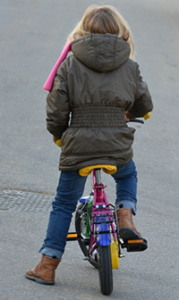 With bicycling listed as the second most popular outdoor activity in the US, it only makes sense that sometime in the possibly not-so-distant future you will be looking for a new bike for your child.
With bicycling listed as the second most popular outdoor activity in the US, it only makes sense that sometime in the possibly not-so-distant future you will be looking for a new bike for your child.
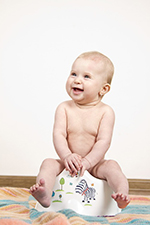 We face many challenges as parents, but toilet training may feel like one of the more daunting ones. And now that your child seems old enough to begin potty training, you also wonder how potty training works in child care. Relax. Like every other aspect of child care, you and your child’s teacher will work as partners in the process of potty learning. Potty training while in a child care or daycare setting may be easier than it is at home.
We face many challenges as parents, but toilet training may feel like one of the more daunting ones. And now that your child seems old enough to begin potty training, you also wonder how potty training works in child care. Relax. Like every other aspect of child care, you and your child’s teacher will work as partners in the process of potty learning. Potty training while in a child care or daycare setting may be easier than it is at home. Daily routines can be a challenge, especially if you have younger children who have a way of losing or misplacing things on a regular basis. Here are some great tips on how to keep your children, especially young ones organized:
Daily routines can be a challenge, especially if you have younger children who have a way of losing or misplacing things on a regular basis. Here are some great tips on how to keep your children, especially young ones organized: Sometimes difficult questions can take parents by surprise. It can be good to plan in advance on how and what to talk to your children about when they ask about death. It is critical not to avoid or try to brush off the questions as that will only cause more confusion and perhaps even fear if children pick up your discomfort on the subject. Here are some tips on how to talk to your children when they ask the difficult questions:
Sometimes difficult questions can take parents by surprise. It can be good to plan in advance on how and what to talk to your children about when they ask about death. It is critical not to avoid or try to brush off the questions as that will only cause more confusion and perhaps even fear if children pick up your discomfort on the subject. Here are some tips on how to talk to your children when they ask the difficult questions: Grocery shopping can be a tricky business, especially for those who are trying to shop healthier. However you can make smarter decisions when shopping by making use of a few tried and tested techniques.
Grocery shopping can be a tricky business, especially for those who are trying to shop healthier. However you can make smarter decisions when shopping by making use of a few tried and tested techniques. We’re well aware of the most common types of poisons that may be lurking in the cupboards in our homes:
We’re well aware of the most common types of poisons that may be lurking in the cupboards in our homes: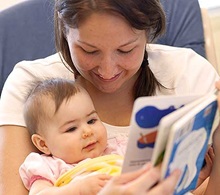 Your child isn’t going to become a great reader over night, but it can happen one book at a time. But what is the best way for you to choose the right book for your child to read?
Your child isn’t going to become a great reader over night, but it can happen one book at a time. But what is the best way for you to choose the right book for your child to read?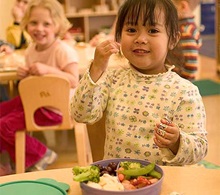 One of the most common struggles parents have is dealing with picky eaters. Does any of this sound familiar to you?
One of the most common struggles parents have is dealing with picky eaters. Does any of this sound familiar to you?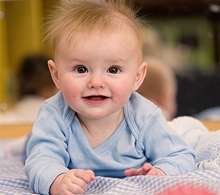 While as adults, we tend to enjoy our bedtime and welcome it with open arms, our children aren’t as excited when it comes time to sleepy time. Here are a few tips to help make the bedtime struggle with your little ones a little less of a struggle.
While as adults, we tend to enjoy our bedtime and welcome it with open arms, our children aren’t as excited when it comes time to sleepy time. Here are a few tips to help make the bedtime struggle with your little ones a little less of a struggle.